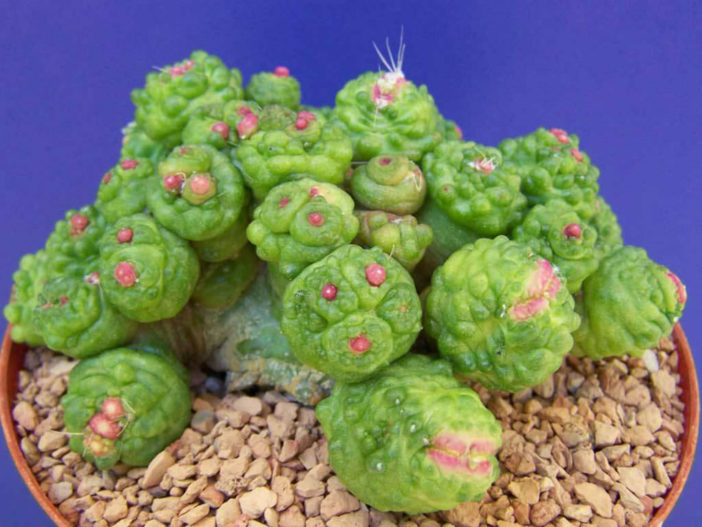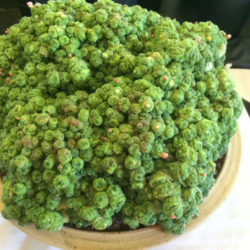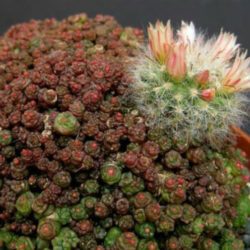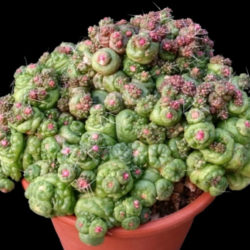Scientific Name
Mammillaria bocasana 'Fred'
Synonym(s)
Mammillaria bocasana f. monstruosa
Scientific Classification
Family: Cactaceae
Subfamily: Cactoideae
Tribe: Cacteae
Subtribe: Cactinae
Genus: Mammillaria
Description
Mammillaria bocasana 'Fred' is a variable cactus that produces many reddish, pinkish, or green stems forming a dense clump. Some stems can be monstrose, others cristate. The stems vary in size according to the time of year, about 0.5 inches (1.3 cm) in diameter in winter during the dormant stage and often reaching twice that size when growing in summer. They are usually smooth, with a few fine hairs emerging from the small areoles. This cultivar is generally stable but occasionally can produce normal offsets from the clump.
Flowers are whitish and rarely produced; when they are, they usually abort.
Origin
Mammillaria bocasana 'Fred' is said to have been produced as an offset from a normal Mammillaria bocasana and propagated in the United States by a collector called Fred.

Hardiness
USDA hardiness zone 10a to 11b: from 30 °F (−1.1 °C) to 50 °F (+10 °C).
How to Grow and Care
To encourage better flowering, allow the plants to enjoy a cooling period in the winter and suspend watering. Unlike many other cacti, which use their ribs as storage devices, the Mammillaria feature raised tubercles, from which spines emerge. When you water, the tubercles will expand for increased water storage. The flowers emerge from the axils of these tubercles on the previous year's growth, which accounts for their interesting halo effect. The cactus mustn't be exposed to prolonged dampness and sitting water. Never let your cactus sit in a dish of water. Lastly, ensure fertilizer during the growing season for the best results.
Repot as needed, preferably during the warm season. To repot a cactus, ensure the soil is dry before repotting, then gently remove the pot. Next, remove the old soil from the roots, removing any rotted or dead roots.
See more at How to Grow and Care for Mammillaria.
Links
- Back to genus Mammillaria
- Succupedia: Browse succulents by Scientific Name, Common Name, Genus, Family, USDA Hardiness Zone, Origin, or cacti by Genus
Photo Gallery
Click on a photo to see a larger version.


